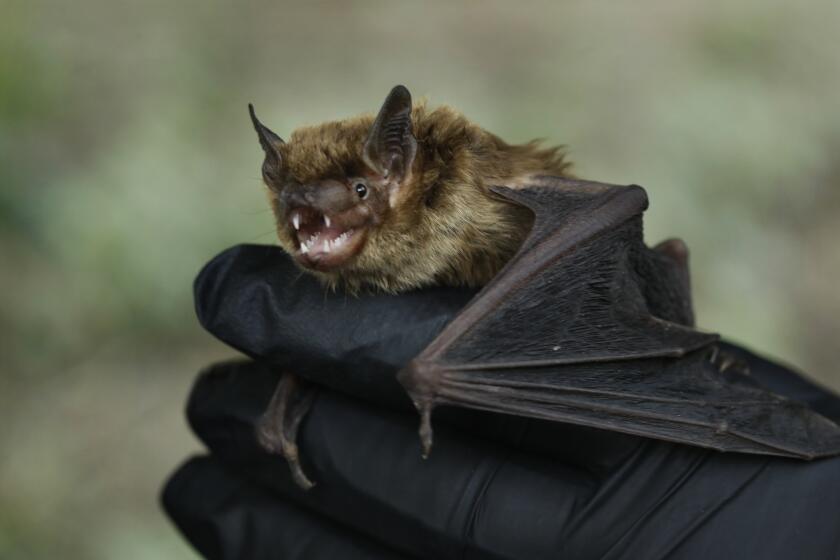Bottlenose dolphins can put in long days
Some dolphins work longer hours than others for their food.
Scientists have been aware for some time that female bottlenose dolphins living in 30- to 50-foot-deep channels off Australia’s western coast bury their noses in sponges and use them as tools to root through the sandy ocean floor for bottom-dwelling prey. It is the only known instance of dolphins or whales using tools.
Now, after the first in-depth analysis of this curious behavior, marine biologist Janet Mann of Georgetown University and colleagues reported Tuesday in the online journal PLoS One that the sponges protect the dolphins’ noses from abrasion. “They can also cover more area than they can with their beak, which is pretty narrow,” she said.
About 11% of female dolphins in Western Australia’s Shark Bay area use the technique, passing it down to their daughters, the scientists said.
Only a very small proportion of their male offspring learn the technique, however. Once they are weaned, they tend to go off and socialize with other males, searching for schools of fish in packs. It is not known whether the males’ failure to use the technique means they get less food, Mann said.
Although the sponge-bearing females spend a disproportionately large amount of their time searching for food, and thus lead a more solitary life than females in areas with a higher abundance of prey, it does not reduce their ability to conceive and raise offspring, the team found.
Other marine species have also been observed using tools. Some crabs cut up sponges and wear them as camouflage. And sea otters use shells, rocks -- even bottles -- to open abalone and other shellfish. But Mann said the dolphins spend a much higher proportion of their time using tools than any species, marine or land-based, other than humans.
--
More to Read
Sign up for Essential California
The most important California stories and recommendations in your inbox every morning.
You may occasionally receive promotional content from the Los Angeles Times.









